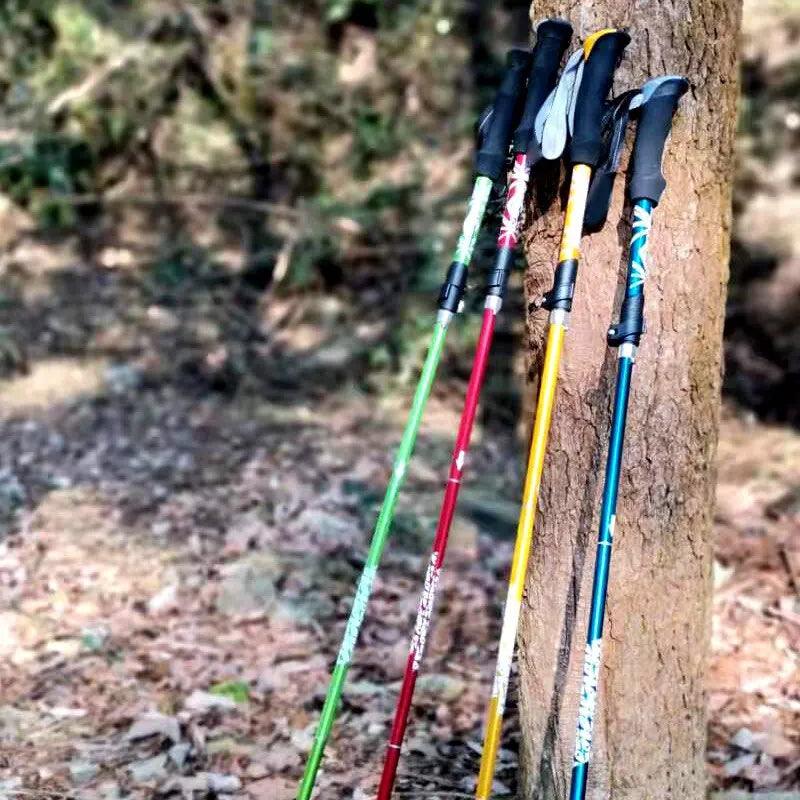Keywords targeted:
hiking sticks, hiking stick, walking sticks for hiking, wood hiking stick, wooden hiking sticks, survival hiking stick, how to use hiking sticks, how tall should a hiking stick be, what are hiking sticks for
Introduction
If you’ve ever found yourself trekking up a steep incline, struggling for balance, or dealing with aching knees after a long hike — a hiking stick might be the trail companion you didn’t know you needed. Hiking sticks (also known as trekking poles or walking sticks for hiking) aren’t just for mountain goats and seasoned backpackers — they offer real benefits for hikers of all skill levels.
What Are Hiking Sticks For?
A hiking stick is more than just a fancy branch or metal rod. Its purpose is to provide:
-
Balance on uneven terrain
-
Reduced strain on knees and joints, especially during downhill descents
-
Extra stability when carrying heavy packs
-
Support crossing streams or slippery paths
They’re incredibly useful on all kinds of terrain — whether you’re tackling muddy trails, loose gravel, snow, or rocky slopes.
Types of Hiking Sticks: What to Know
When you start shopping, you’ll realize there’s no “one size fits all” hiking stick. Here are a few popular types:
-
Wood Hiking Stick / Wooden Hiking Sticks:
These offer a traditional aesthetic, durability, and a satisfying weight. Many hikers love their natural feel and classic look. -
Tactical or Survival Hiking Stick:
Ideal for adventurers who want added features like a built-in compass, knife, firestarter, or even a hidden compartment. These are perfect for multi-day treks or bushcraft scenarios. -
Adjustable or Collapsible Poles:
Lightweight, often made of aluminum or carbon fiber, these are great for travelers or people who hike varying terrain.
How Tall Should a Hiking Stick Be?
A general rule: when holding the stick with the tip on the ground, your elbow should be at a 90-degree angle. Taller hikers may need a longer stick, while shorter individuals should opt for a compact size.
How to Use Hiking Sticks Properly
Using hiking sticks the right way enhances your comfort and endurance:
-
On flat ground: Keep your poles vertical and close to your body for rhythm and support.
-
Uphill: Shorten the stick slightly, plant it closer to your body, and use it to push upward.
-
Downhill: Lengthen the stick and place it in front to reduce knee pressure and improve stability.
-
Stream crossings or obstacles: Use the stick to test depth or terrain before stepping in.
Benefits You’ll Feel Right Away
-
Reduced fatigue: Distributes weight and saves energy.
-
Injury prevention: Less stress on joints, especially on long descents.
-
Increased speed and rhythm: Helps maintain a consistent pace.
-
Improved posture: Encourages a more upright stance, especially when carrying gear.
Wood vs Tactical vs Collapsible — Which Is Right for You?
-
Choose wood if you prefer a sturdy, traditional look and feel.
-
Go tactical if you love gadgets or plan on rugged, remote trails.
-
Pick collapsible if you’re a travel hiker and need something lightweight and portable.
Where to Buy Hiking Sticks
REI and other outdoor stores carry quality gear, but more hikers are turning to specialty brands online for custom designs — especially for wooden and tactical models.
Final Thoughts
A hiking stick is more than just a tool — it’s a hiking companion. Whether you’re a weekend trail explorer or a long-distance trekker, the right stick can make every step safer, smoother, and more enjoyable.

